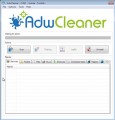There are many types of malware and one of them is ‘ad-supported’ software (also known as adware). The adware, which causes the appearance of privately.men pop-up offering install an questionable browsers extension, have a negative impact on the functioning of your PC. It alters computer settings, generates tons of various advertisements, slows down the Google Chrome, Internet Explorer, Mozilla Firefox and MS Edge and the speed of your internet connection. Moreover, it may lead to the fact that web-pages are slow to load and the browser interface can even freeze. The main function of the ad-supported software is showing advertisements, so it may reroute your web-browser to an unwanted site like privately.men, instead of the one that you want to visit. Even if you try to type an address into the internet browser’s address bar, then the web-browser is anyway will show an unwanted ad page.
The malicious software from the ‘ad supported’ software family that modifies the settings of web browsers usually affects only the Chrome, Firefox, Microsoft Internet Explorer and Edge. However, possible situations, when any other web-browsers will be affected too. The ad supported software may change the Target property of a web browser’s shortcut, so every time you run the web-browser, instead of your startpage, you will see the unwanted privately.men ads.
The ad supported software is the part of the software that is used as an online promotional tool. It’s created with the sole purpose to show dozens of pop-up ads, and thus to promote the goods and services in an open web-browser window. So, the privately.men is just one of the many web-sites of the so-called ‘ad-support’ type. It is designed to fill the web-browser’s constant stream of advertisements, or redirect the web-browser to not expected and intrusive advertising pages. Moreover, the ‘ad supported’ software can substitute the legitimate advertising banners on misleading or even banners that can offer to visit harmful web sites. The reason is simple, many advertisers agree on any ways to attract users to their sites, so the creators of adware, often forcing users to click on an advertising link. For each click on a link, the authors of the adware receive income. It is the so-called ‘Pay-Per-Click’ method.
Instructions, which is shown below, will allow you to clean your computer from the adware as well as remove privately.men unwanted pop-ups from the Chrome, Firefox, IE and MS Edge and other internet browsers.
How can you protect your computer from privately.men pop-up ads
The adware spreads with a simple but quite effective way. It’s integrated into the installation package of various free software. Thus on the procedure of install, it’ll infect your internet browser. To avoid adware infection, you just need to follow a few simple rules: carefully read the ‘Terms of Use’ and the ‘License’, select only a Manual, Custom or Advanced installation mode, which enables you to make sure that the application you want to install, thereby protect your system from the malicious software like this adware which shows the privately.men ads.
How to manually remove privately.men advertisements
The following instructions is a step-by-step guide, that will help you manually get rid of privately.men advertisements from the Google Chrome, Firefox, MS Edge and IE.
- Uninstall suspicious and unknown applications by using Windows Control Panel
- Disinfect the browser’s shortcuts to get rid of privately.men redirect
- Remove privately.men from Google Chrome
- Remove privately.men pop-up ads from FF
- Get rid of privately.men from Microsoft Internet Explorer
- Get rid of unwanted Scheduled Tasks
Uninstall suspicious and unknown applications by using Windows Control Panel
The best way to begin the system cleanup is to remove unknown and suspicious software. Using the Windows Control Panel you can do this quickly and easily. This step, in spite of its simplicity, should not be ignored, because the removing of unneeded software can clean up your internet browser from pop-up ads, hijackers and so on.
- If you are using Windows 8, 8.1 or 10 then press Windows key, click Search. Type “Control panel”and press Enter.
- If you are using Windows XP, Vista, 7, then press “Start” button and click “Control Panel”.
- It’ll open the Windows Control Panel.
- Click “Uninstall a program” under Programs category.
- You will see a list of all installed applications.
- Scroll through the all list, and remove suspicious and unknown programs. To quickly find the latest installed programs, we recommend sort applications by date.
See more details in the video instructions below.
Disinfect the browser’s shortcuts to get rid of privately.men redirect
When the ad supported software is started, it can also alter the web browser’s shortcuts, adding an argument like “http://site.address” into the Target field. Due to this, every time you launch the web-browser, it will be redirected to an annoying advertisements.
To clear the browser shortcut, right-click to it and select Properties. On the Shortcut tab, locate the Target field. Click inside, you will see a vertical line – arrow pointer, move it (using -> arrow key on your keyboard) to the right as possible. You will see a text which begins with “http://” which has been added here. You need to remove it.

When the argument is removed, click the OK button. You need to clean all shortcuts of all your browsers, as they may be infected too.
Remove privately.men from Google Chrome
Open the Google Chrome menu by clicking on the button in the form of three horizontal stripes (![]() ). It opens the drop-down menu. Next, press the “Settings” option.
). It opens the drop-down menu. Next, press the “Settings” option.

Scroll down to the bottom of the page and click on the “Show advanced settings” link. Now scroll down until the Reset settings section is visible, as shown on the image below and click the “Reset settings” button.
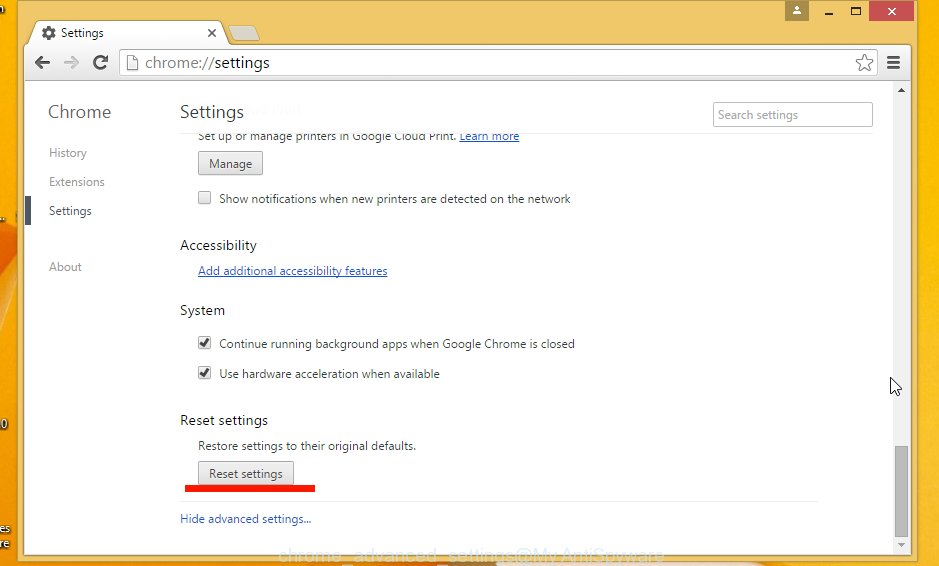
Confirm your action, click the “Reset” button.
Remove privately.men pop-up ads from FF
First, start the Firefox. Next, press the button in the form of three horizontal stripes (![]() ). It will show the drop-down menu. Next, click the “Help” button (
). It will show the drop-down menu. Next, click the “Help” button (![]() ).
).

In the Help menu, click the “Troubleshooting Information”. In the upper-right corner of the “Troubleshooting Information” page, press “Refresh Firefox” button.

Confirm your action, click the “Refresh Firefox”.
Get rid of privately.men from Microsoft Internet Explorer
First, start the Internet Explorer, then click the button in the form of gear (![]() ). It will open the Tools drop-down menu as shown on the screen below. Next, click the “Internet Options”.
). It will open the Tools drop-down menu as shown on the screen below. Next, click the “Internet Options”.

In the Internet Options window click on the Advanced tab, then click the Reset button. The IE will show the “Reset Internet Explorer settings” window like below. Select the “Delete personal settings” check box, then click on “Reset” button.

You will now need to reboot your computer for the changes to take effect.
Get rid of unwanted Scheduled Tasks
Once installed, the ‘ad supported’ software can add a task in to the Windows Task Scheduler Library. Due to this, every time when you start your computer, it will display privately.men unwanted web-page. So, you need to check the Task Scheduler Library and remove all tasks that have been created by ‘ad-supported’ program.
Press Windows and R keys on your keyboard at the same time. It will open a prompt which called Run. In the text field, type “taskschd.msc” (without the quotes) and press OK. Task Scheduler window opens. In the left-hand side, click “Task Scheduler Library”, as shown in the figure below.
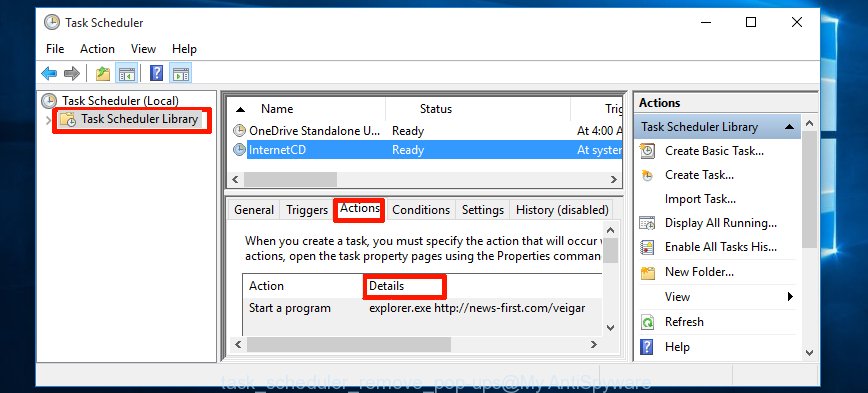
Task scheduler, list of tasks
In the middle part you will see a list of installed tasks. Select the first task, its properties will be show just below automatically. Next, click the Actions tab. Necessary to look at the text which is written under Details. Found something like “explorer.exe http://site.address” or “chrome.exe http://site.address” or “firefox.exe http://site.address”, then you need remove this task. If you are not sure that executes the task, then google it. If it is a component of the malicious program, then this task also should be removed.
Further click on it with the right mouse button and select Delete as shown below.

Task scheduler, delete a task
Repeat this step, if you have found a few tasks that have been created by ‘ad-supported’ program. Once is complete, close the Task Scheduler window.
How to get rid of privately.men with free malware removal program
Manual removal privately.men pop-ups requires some computer skills. Some files and registry entries that created by the ‘ad supported’ software may be not completely removed. We suggest that use the Malwarebytes Free that are completely clean your computer. Moreover, the free software will help you to remove malware, web-browser hijackers and toolbars that your computer may be infected too.
- Please download Malwarebytes to your desktop from the following link.
Malwarebytes Anti-malware
327737 downloads
Author: Malwarebytes
Category: Security tools
Update: April 15, 2020
- At the download page, click the Download button. Your internet browser will open the “Save as” prompt. Please save it onto your desktop.
- When the download process is finished, please close all applications and open windows on your machine. Double-click on the icon that’s named mb3-setup.
- This will open the Setup wizard of Malwarebytes onto your machine. Follow the prompts and do not make any changes to default settings.
- Once the Setup wizard has complete installing, the malware remover will start and open the main window.
- Further, click the “Scan Now” button . This will start scanning the whole machine to find out adware that redirects your internet browser to the privately.men unwanted page. This process can take quite a while, so please be patient.
- Once the scan is finished, it will open a screen that contains a list of malicious programs that has been found.
- When you are ready, press on “Quarantine Selected” button to begin cleaning your computer. When the task is complete, you may be prompted to restart your PC.
- Close the Anti-Malware and continue with the next step.
Video instruction, which reveals in detail the steps above.
Stop privately.men pop-up ads and other annoying web-sites
To increase your security and protect your machine against new unwanted ads and malicious web sites, you need to use application that stops access to malicious ads and web-sites. Moreover, the program can block the open of intrusive advertising, that also leads to faster loading of web-pages and reduce the consumption of web traffic.
Download AdGuard program from the following link.
27038 downloads
Version: 6.4
Author: © Adguard
Category: Security tools
Update: November 15, 2018
When the download is finished, start the file named adguardInstaller. You will see the “Setup Wizard” screen as shown on the image below.
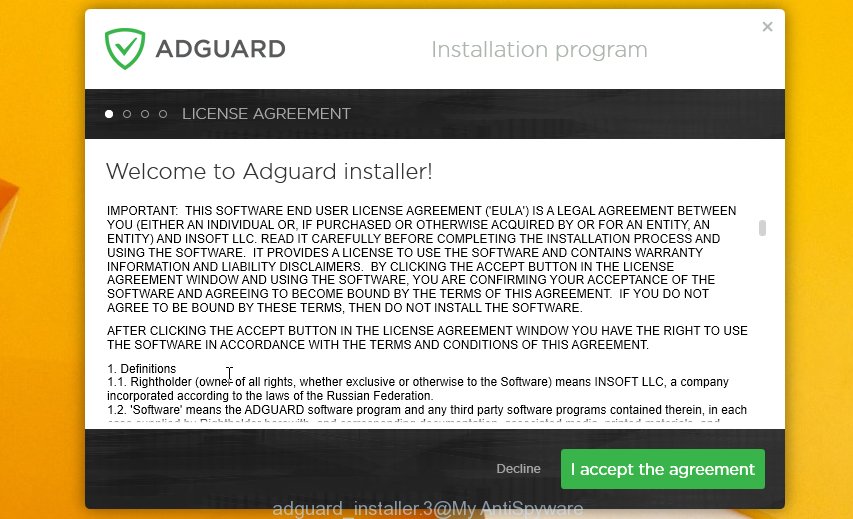
Follow the prompts. When the setup is done, you will see a window as shown on the screen below.

You can click “Skip” to close the install application and use the default settings, or press “Get Started” button to see an quick tutorial that will help you get to know AdGuard better.
In most cases, the default settings are enough and you do not need to change anything. Each time, when you launch your personal computer, AdGuard will run automatically and stop pop-up ads, sites such as privately.men, as well as other harmful or misleading web pages. For an overview of all the features of the program, or to change its settings you can simply double-click on the AdGuard icon, which is located on your Windows desktop.
Get rid of privately.men pop-up ads and malicious extensions with AdwCleaner.
If MalwareBytes cannot remove the annoying privately.men pop-up ads from the Chrome, Firefox, Internet Explorer and MS Edge, then we suggests to use the AdwCleaner. AdwCleaner is a free removal tool for ‘ad supported’ software, browser hijackers, PUPs and toolbars.
Download AdwCleaner by clicking on the link below.
225791 downloads
Version: 8.4.1
Author: Xplode, MalwareBytes
Category: Security tools
Update: October 5, 2024
After the download is done, open the directory in which you saved it. Double click the AdwCleaner icon. Once this utility is started, you will see a screen like below.

Now, press the “Scan” button to start scanning your computer for the malicious extensions and adware which opens ads from privately.men site. Once the checking is finished, it will show a scan report as shown below.
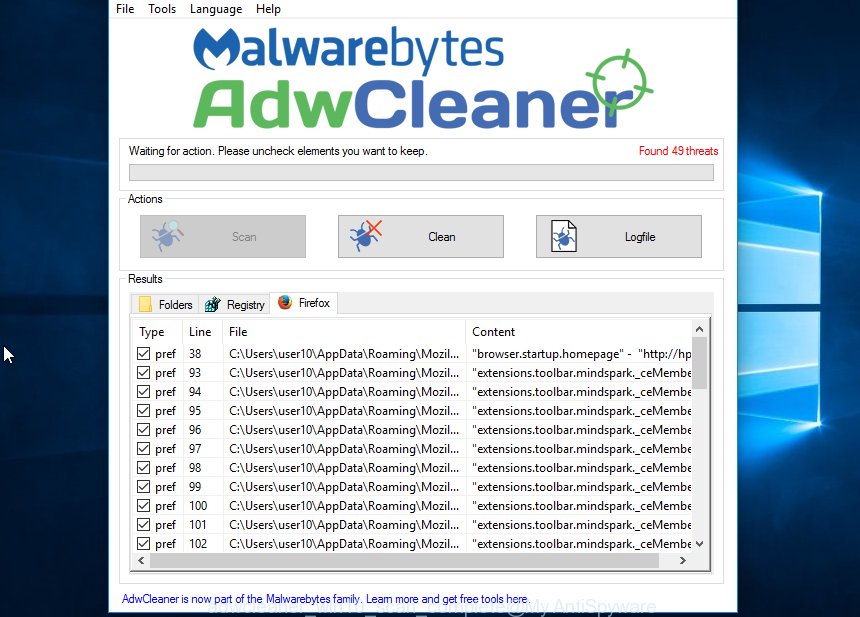
Review the report and then click “Clean” button. It will display a prompt. Click “OK”. When the clean up is finished, AdwCleaner may ask you to reboot your PC system.
Look at the following video, which completely explains the procedure of using the AdwCleaner to delete ad supported software, browser hijackers and other harmful software.
Finish words
After completing the instructions outlined above, your PC system should be free from malware and ad-supported software. The Chrome, Firefox, Microsoft Edge and Microsoft Internet Explorer will no longer display privately.men annoying pop-up ads or redirect you to unwanted web-sites. Unfortunately, if the few simple steps does not help you, then you have caught a new type of adware, and then the best way – ask for help in our Spyware/Malware removal forum.

